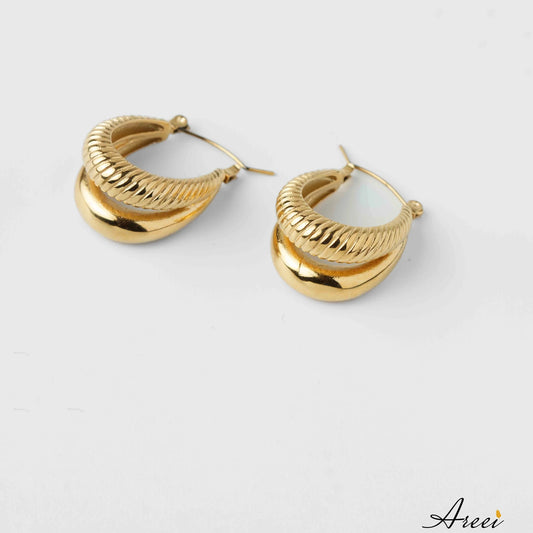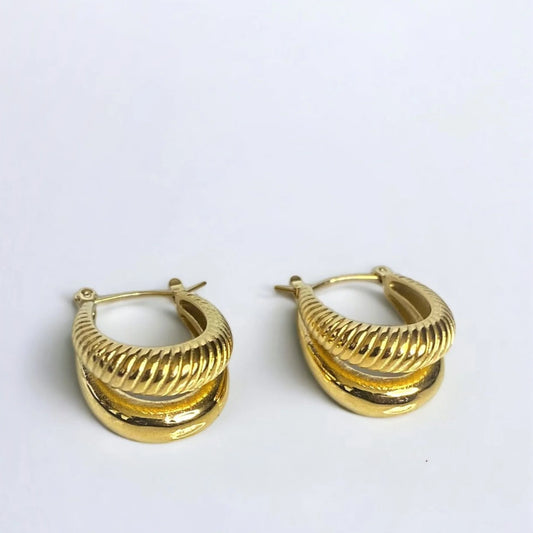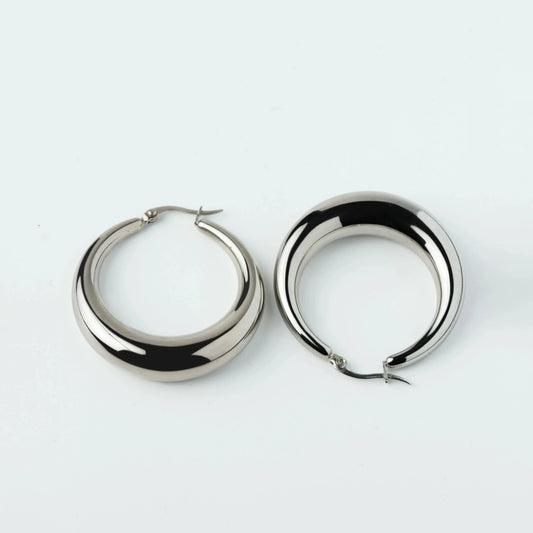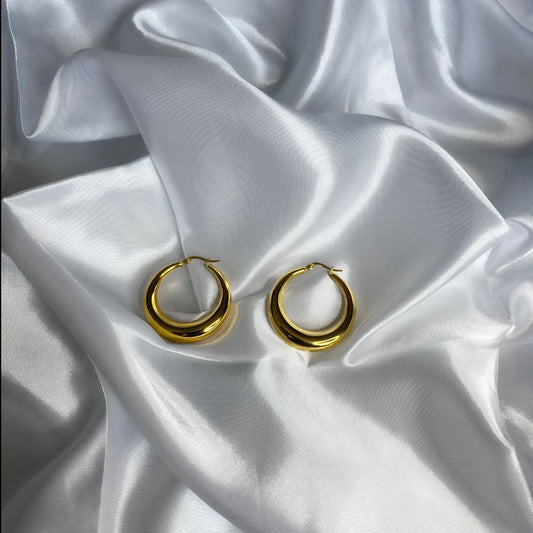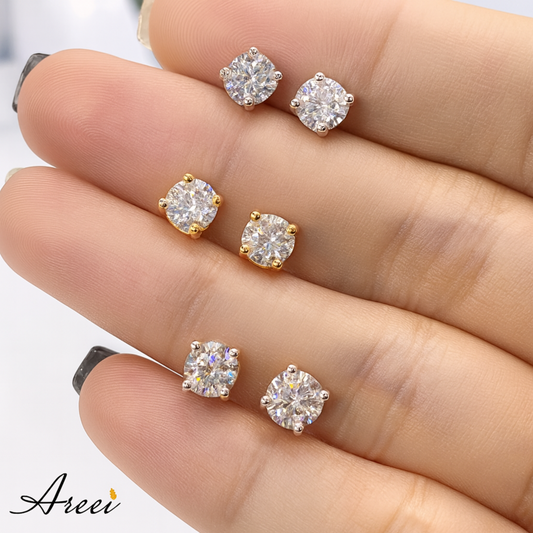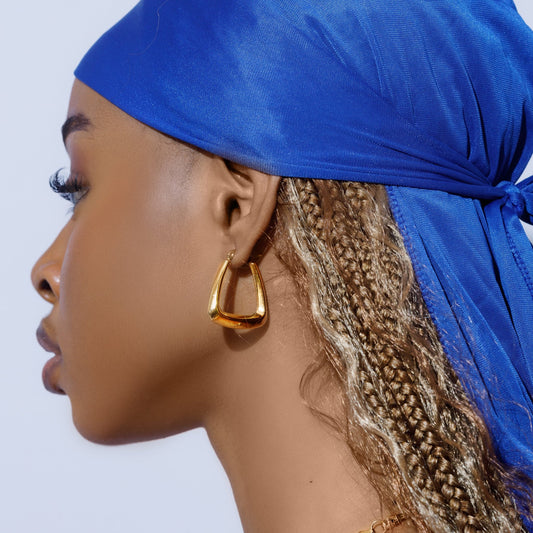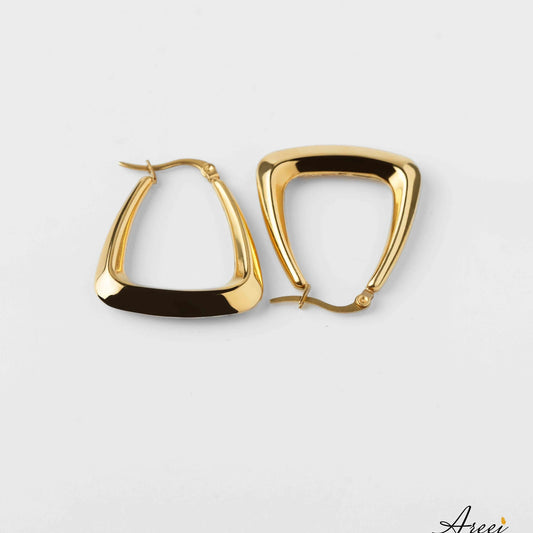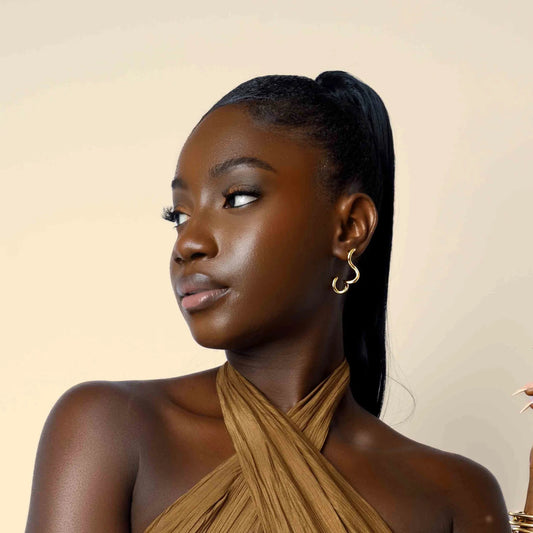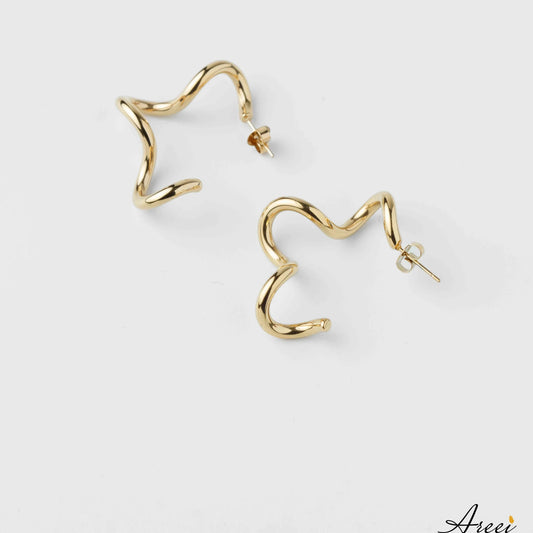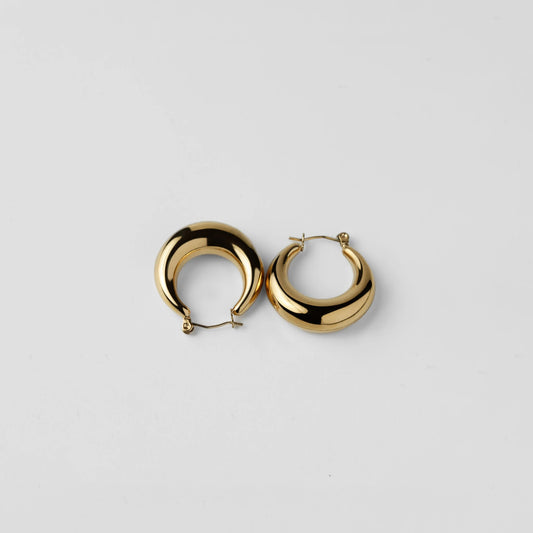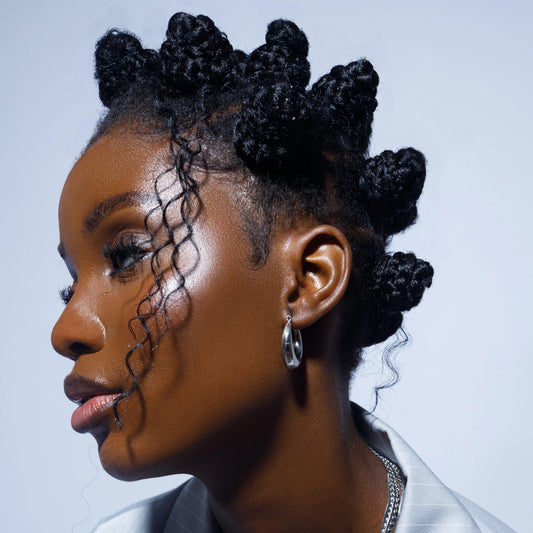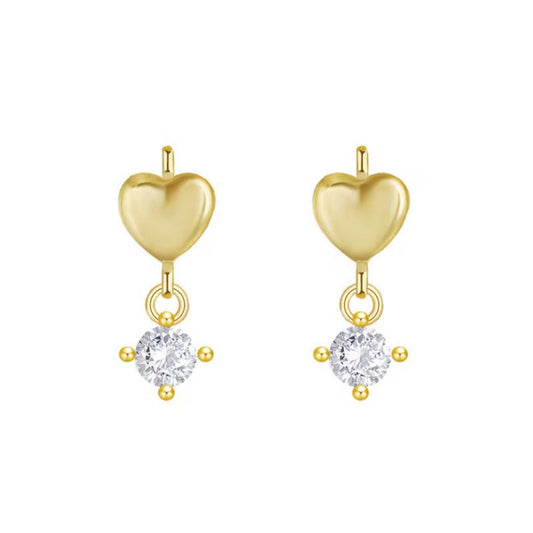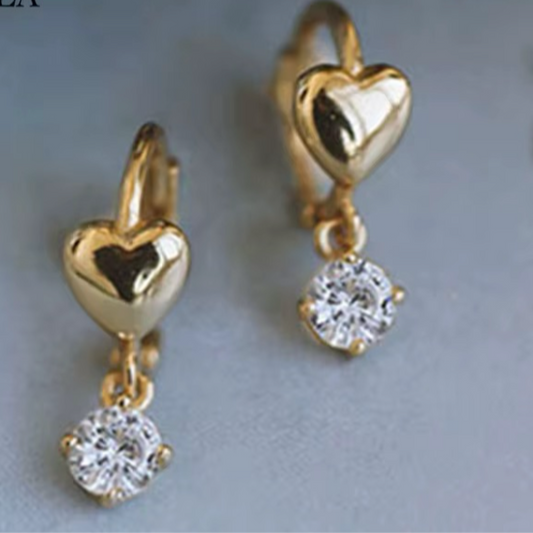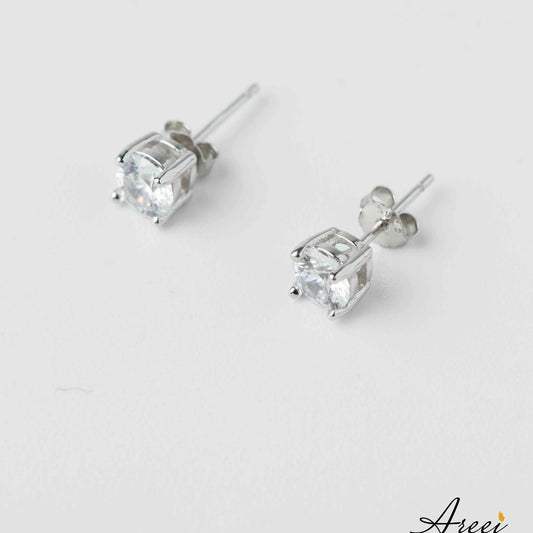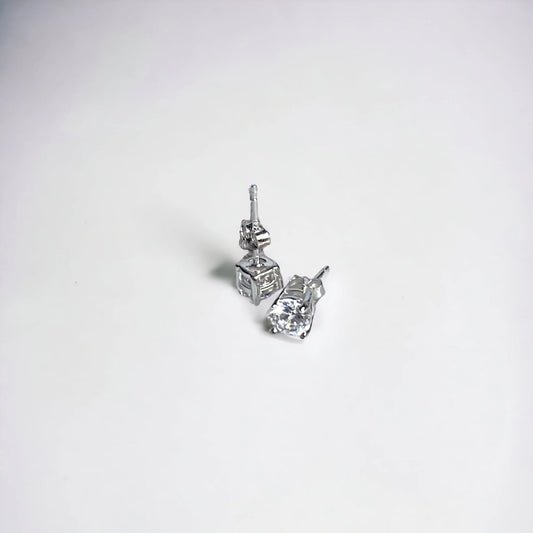We’re going deeper into the world of ear piercings. So if you’re getting your first piercing or planning on adding to the ones you have already, check this out and transform your piercing knowledge.
Which Ear Piercing Looks Attractive?
The topic of attractiveness is a subjective topic and it falls down to personal choice, but there are certain piercing placements that have become particularly really popular because of their aesthetic feel. The lobe piercing remains the mother of piercing, a timeless classic that complements virtually any face shape. For those looking for something more distinctive, helix piercings (along the upper cartilage) creates an elegant line that draws attention.
Constellation piercings—multiple studs arranged in unique patterns—have also gained popularity for their customisable nature and eye-catching appeal. Daith piercings, which go through the innermost fold of cartilage, make a striking statement with the right jewellery.
Remember that the most attractive piercing is ultimately the one that makes you feel confident and complements your personal style.
How Many Ear Piercings Look Classy?
The number of piercings that appear "classy" varies widely based on personal style, workplace environment, and cultural context. Many style experts suggest that 1-3 piercings per ear maintains a balanced, sophisticated look. For a more conservative appearance, single lobe piercings with high-quality jewellery are often read as most traditional.
For those embracing a more artistic look, curated ear projects with 5+ strategically placed piercings can still appear elegant when styled with complementary jewellery in cohesive metals or designs.
What is the Cutest Piercing?
Tragus piercings—which go through the small piece of cartilage in front of your ear canal—are often considered particularly cute for their unexpected placement and the way they peek out when hair is tucked behind the ear. Forward helix piercings also rank high on the cuteness scale, especially when adorned with small, delicate studs.
For maximum charm, consider a conch piercing with a tiny stud or a small rook piercing featuring a dainty curved barbell.
What Type of Earring is Best for Piercing?
For fresh piercings, implant-grade titanium flat-back labrets are widely considered optimal. Unlike traditional butterfly backs which can harbor bacteria, flat-back studs provide a smooth surface that's less likely to catch on clothing or hair.
For cartilage piercings specifically, studs are preferable to hoops during the initial healing period, as they minimise movement and irritation. Once healed, you can explore more diverse jewellery options.
What is the Best Ear Piercing for Beginners?
Standard lobe piercings remain the gold standard for first-timers. They heal relatively quickly (6-8 weeks), cause minimal pain, and provide flexibility for various jewellery styles after healing. The lobe has excellent blood flow, which promotes healing and reduces complication risk.
If you're seeking something slightly more adventurous, a helix piercing along the outer rim of the ear is generally considered the next step up in terms of pain and healing complexity.
What Earring Materials Are Safe for Sensitive Ears?
For those with metal sensitivities, implant-grade titanium stands as the safest option. It's allergy free, lightweight, and biocompatible. Other safe materials include:
- Solid 14k or 18k gold (not gold-plated)
- Titanium
- Medical-grade stainless steel (though some with severe nickel allergies may still react)
Avoid costume jewellery, sterling silver (for fresh piercings), and anything containing nickel, which is the most common cause of metal allergies. Go more in depth into what’s safe for your sensitive ears with our Best Studs for Ear Piercings? article.
What is the 3/2 Piercing Rule?
The 3/2 piercing rule is a guideline recommended by professional piercers that suggests never having more than 3 piercings healing simultaneously, with no more than 2 in cartilage.
This rule exists because:
- Each piercing diverts your body's healing resources
- Cartilage piercings are particularly demanding on your immune system
- Multiple healing piercings increase the risk of complications
Following this rule optimises your chances of successful healing and reduces recovery time.
What is the Hardest Piercing to Pierce?
Snug piercings, which pass through the inner cartilage ridge between the anti-helix and helix, are among the most technically challenging for piercers due to the compact nature of this area and its thick cartilage. The rook piercing similarly presents difficulties as it requires precise angle placement through a thick fold of cartilage.
What is the Trickiest Piercing to Heal?
Industrial piercings—which require two cartilage holes connected by a single barbell—are notoriously difficult to heal. Because they connect two separate wound channels, any irritation to one hole can affect the other. Healing typically takes 9-12 months or longer.
Snug piercings also prove challenging during healing due to their location in an area with limited blood flow and high pressure when sleeping.
Which Piercing Gets Infected Easily?
Cartilage piercings generally face higher infection risks than lobe piercings due to limited blood flow to these areas. Among cartilage piercings, industrials and snugs report higher complication rates.
Swimming pools, hot tubs, and lakes present particular risks for new piercings, as they expose wounds to bacteria and chemicals that can trigger infections.
What is the Most Painful Piercing?
Pain perception varies significantly between individuals, but the tragus, daith, and rook consistently rank among the more painful ear piercings due to their thick cartilage. The conch can also cause significant discomfort during piercing as the needle passes through substantial cartilage tissue.
What Piercing is Painless?
No piercing is truly painless, but lobe piercings generally cause minimal discomfort, often described as a quick pinch followed by pressure. For many, the anticipation proves worse than the actual procedure, which typically lasts only seconds
Which Piercing Helps with Headaches?
Some believe daith piercings may help relieve migraine headaches, as this placement corresponds to an acupressure point associated with headache relief in traditional medicine. The scientific evidence remains anecdotal rather than clinically proven, with some users reporting significant relief while others experience no change in headache frequency or intensity.
If considering a daith piercing for migraine relief, approach it as an experimental treatment rather than a guaranteed solution.
Which Piercing Heals the Fastest?
Lobe piercings typically heal most rapidly, usually within 6-8 weeks with proper care. Their excellent blood supply and minimal cartilage make them relatively quick to recover compared to other placements.
What is the Slowest Healing Piercing?
Industrial piercings often require the longest healing period, typically 9-12 months or longer. Other cartilage piercings like the daith, rook, and snug commonly take 6-12 months for complete healing.
How to Heal an Ear Piercing Faster?
While you can't rush your body's natural healing process, these practices support optimal recovery:
- Follow a consistent cleaning routine with sterile saline solution
- Avoid touching piercings with unwashed hands
- Don't sleep on healing piercings
- Maintain overall good health through adequate sleep, hydration, and nutrition
- Avoid swimming in pools, hot tubs, and natural bodies of water during healing
- Don't change jewellery prematurely
How to Clean an Ear Piercing?
For optimal healing, clean piercings twice daily:
- Wash hands thoroughly before touching piercings
- Spray or soak the area with sterile saline solution
- Gently remove any softened crust with clean, lint-free material
- Rinse thoroughly, ensuring no cleaning solution remains
- Pat dry with clean paper towels or allow to air dry
Best Products for Cleaning Ear Piercings
Sterile saline solution (0.9% sodium chloride) stands as the gold standard for piercing care. Look for products specifically labeled for wound care, without additives or preservatives. Brands like NeilMed Piercing Aftercare offer convenient spray delivery systems ideal for reaching awkward piercing angles.
Mistakes to Avoid When Cleaning Piercings
Common aftercare mistakes include:
- Using alcohol, hydrogen peroxide, or harsh antiseptics that damage healing tissue
- Over-cleaning, which can irritate the piercing
- Rotating jewellery during cleaning (this damages the forming healing channel)
- Using cotton balls/swabs that leave behind fibers
- Applying ointments that block oxygen necessary for healing
How Long Does it Take for a Piercing Hole to Close?
Fresh piercings can begin closing within hours if jewellery is removed. Established lobe piercings (worn constantly for years) may never completely close, though they will typically shrink significantly if left empty.
Cartilage piercings generally close from the inside out—while the external opening may remain visible, the channel through the tissue will begin closing relatively quickly when jewellery is removed.
Factors affecting closure time include:
- How long you've had the piercing
- Your individual healing characteristics
- The piercing location
- Whether there was scarring or complications during healing
Remember that even "closed" piercings often leave a small mark or dimple where the hole once was, particularly with larger gauge piercings.
Whether you're contemplating your first piercing or expanding your collection, approaching ear piercings with proper information ensures the best experience and outcome. Always consult with a professional piercer for advice specific to your anatomy and circumstances.

